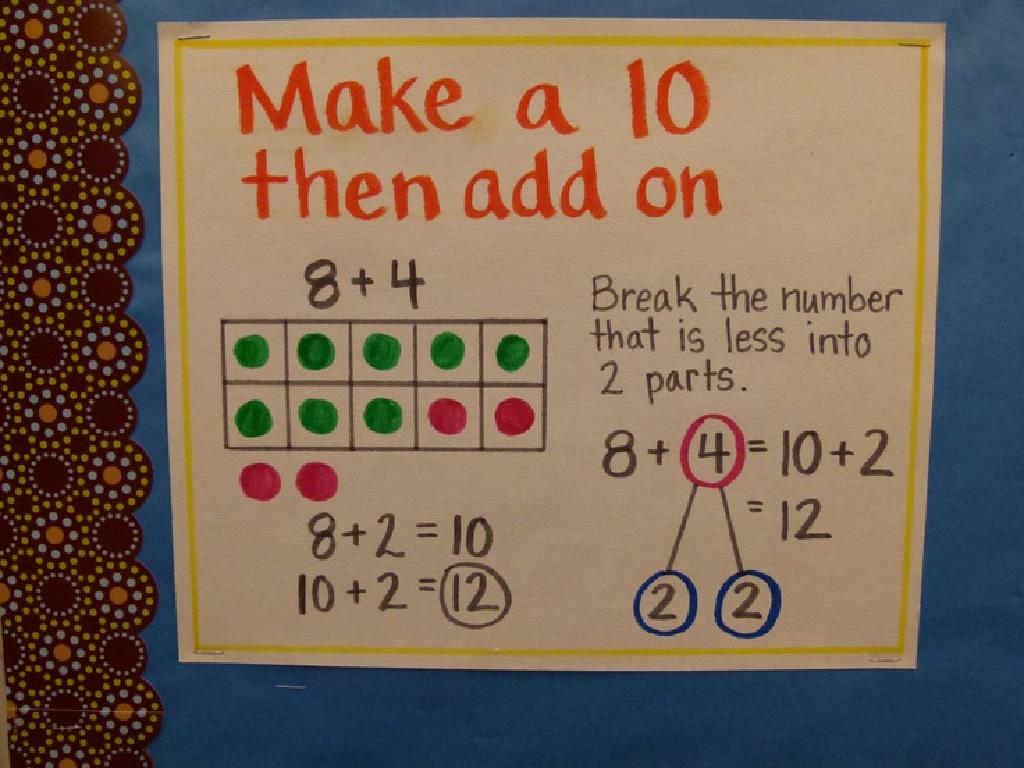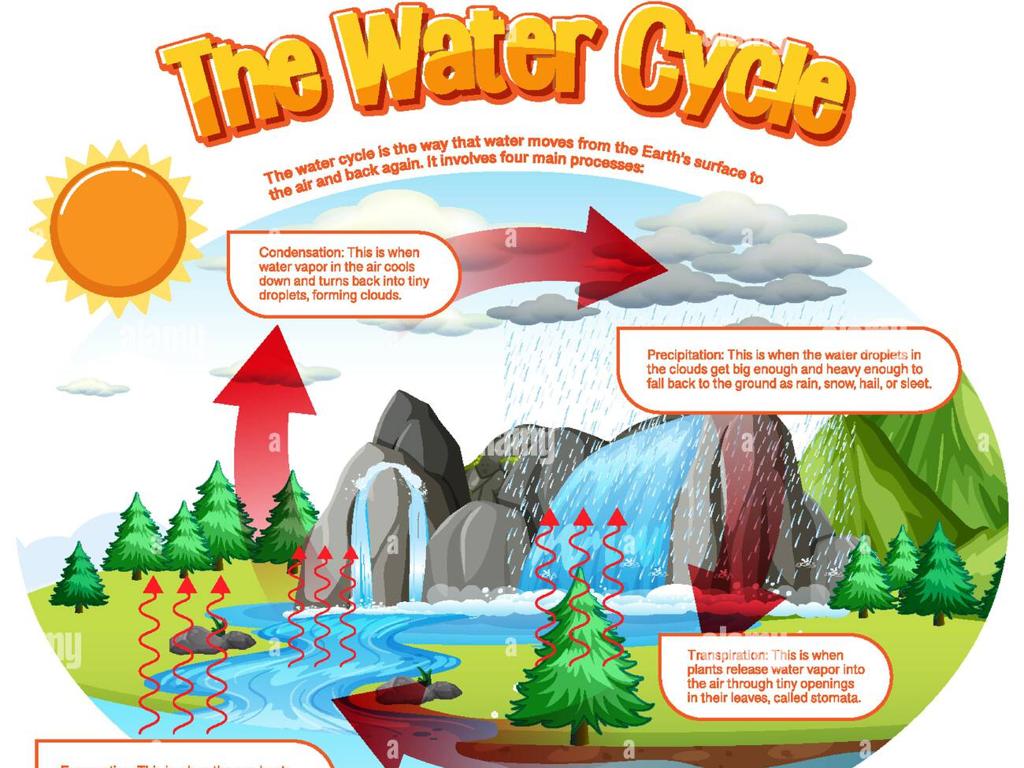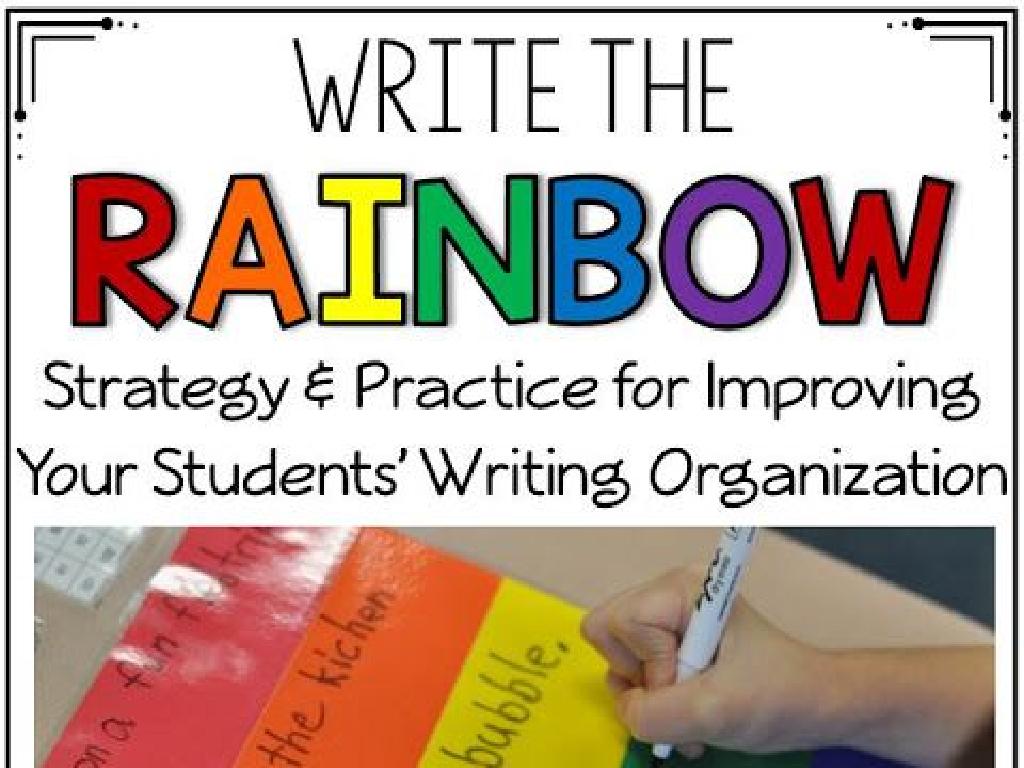Identify Personal Pronouns
Subject: Language arts
Grade: Third grade
Topic: Pronouns
Please LOG IN to download the presentation. Access is available to registered users only.
View More Content
Welcome to Pronouns!
– What are pronouns?
– Pronouns take the place of nouns, like ‘he’, ‘she’, or ‘they’.
– Types of pronouns
– Personal, possessive, reflexive are some types.
– Using pronouns in sentences
– Instead of saying ‘Sarah’, say ‘she’ to avoid repetition.
– Practice identifying pronouns
|
This slide introduces the concept of pronouns to third-grade students. Begin by explaining that pronouns are words used to replace nouns, which can make our sentences sound less repetitive and more interesting. Discuss different types of pronouns, focusing on personal pronouns, and show examples of how to use them in sentences. For instance, replace names with ‘he’, ‘she’, ‘it’, ‘they’, etc., to demonstrate how pronouns function. Engage the class with practice exercises where they identify pronouns in given sentences or replace nouns with appropriate pronouns. This activity will help solidify their understanding of the use of pronouns in everyday language.
Understanding Personal Pronouns
– Pronouns replace nouns
– Instead of saying ‘Sara’ many times, say ‘she’
– They prevent repetition
– Makes sentences shorter and easier to read
– Examples: I, you, he, she, it
– ‘I’ for yourself, ‘you’ for someone you’re talking to
– Practice using pronouns
– Find a noun in a sentence and replace it with a pronoun
|
This slide introduces the concept of pronouns, which are essential in helping students write and speak more efficiently. Pronouns take the place of nouns, allowing us to avoid unnecessary repetition in our sentences. Provide examples of personal pronouns such as ‘I’, ‘you’, ‘he’, ‘she’, and ‘it’, and show how they can replace proper nouns or common nouns. Encourage students to practice by identifying nouns in sentences and choosing the correct pronouns to replace them. This exercise will help them understand how pronouns function in everyday language and improve their communication skills.
Exploring Personal Pronouns
– Pronouns: Words that replace nouns
– Types of pronouns: Many kinds!
– Personal, possessive, reflexive, etc.
– Today’s focus: Personal pronouns
– ‘I’, ‘you’, ‘we’, ‘he’, ‘she’, ‘it’, ‘they’
– Examples: ‘he’, ‘she’, ‘it’, ‘they’
– ‘He’ for boys, ‘she’ for girls, ‘it’ for objects, ‘they’ for groups
|
This slide introduces the concept of pronouns, with a specific focus on personal pronouns. Begin by explaining that pronouns are words used in place of nouns to avoid repetition and make sentences easier to understand. Highlight the different types of pronouns briefly, but clarify that the lesson will concentrate on personal pronouns. Provide clear examples of personal pronouns and use them in simple sentences to show how they function in place of someone’s name or a noun. Encourage students to think of personal pronouns they use every day and come up with examples of their own.
Exploring Personal Pronouns
– Personal pronouns as subjects or objects
– Pronouns take the place of nouns
– Subject pronouns: I, you, he, she, it, we, they
– ‘I’ is used for the speaker; ‘you’ for the person spoken to
– Object pronouns: me, you, him, her, it, us, them
– ‘Me’ is used for the speaker; ‘him’ for a male object
– Practice using pronouns in sentences
|
This slide introduces the concept of personal pronouns and their role in sentences. Begin by explaining that personal pronouns can replace specific names of people, places, or things and can act as the subject or the object in a sentence. Subject pronouns are used when the pronoun is the one doing the action (e.g., ‘I run’), while object pronouns are used when the pronoun is receiving the action (e.g., ‘The ball hit me’). Provide examples for each pronoun and encourage students to create sentences using both subject and object pronouns. This will help them understand the difference in usage. The practice activity can involve students writing sentences or identifying pronouns in a given paragraph.
Identifying Personal Pronouns
– Understanding personal pronouns
– Words that replace specific names, like ‘he’, ‘they’, ‘we’
– Spot pronouns in sentences
– Example: ‘She’ is a pronoun
– In ‘She went to the store.’, ‘She’ takes the place of a name
– Practice finding pronouns
– Look for pronouns in your favorite book or story
|
This slide introduces the concept of personal pronouns to third-grade students. Begin by explaining that personal pronouns are words used to replace specific names of people or things, making sentences less repetitive and more natural. Show them how to identify pronouns in sentences by providing clear examples. Use the sentence ‘She went to the store.’ to illustrate how ‘She’ is used instead of a person’s name. Encourage the students to practice by finding pronouns in sentences from books they enjoy reading. This activity will help them recognize pronouns in various contexts and understand their use in everyday language.
Using Personal Pronouns
– Personal pronouns represent people
– Like ‘he’ for a boy or ‘she’ for a girl
– They can be subjects or objects
– Subject pronouns do the action, object pronouns receive the action
– ‘I’, ‘you’, ‘he’, ‘she’, ‘it’, ‘we’, ‘they’
– Subject pronouns: who is doing something
– ‘me’, ‘you’, ‘him’, ‘her’, ‘us’, ‘them’
– Object pronouns: who is receiving something
|
This slide introduces the concept of personal pronouns, which are words that take the place of specific names of people or things. Explain that pronouns help us avoid repeating the same names over and over. Provide examples for subject pronouns (I, you, he, she, it, we, they) which are used when the person is doing the action, and object pronouns (me, you, him, her, us, them) which are used when the person is receiving the action. Use simple sentences to illustrate the difference, such as ‘He threw the ball’ and ‘She caught it.’ Encourage students to practice by writing sentences using both types of personal pronouns.
Practice Time: Spot the Personal Pronouns!
– Let’s practice with sentences
– I’ll say a sentence aloud
– You find the personal pronoun
– Personal pronouns replace names, like ‘he’, ‘she’, ‘it’, ‘they’
– Share your answers with the class
|
This slide is for an interactive classroom activity focused on identifying personal pronouns. The teacher will read sentences aloud, and students will pinpoint the personal pronouns used. This exercise helps reinforce the concept of personal pronouns, which are words that take the place of specific names of people, animals, or things. The activity is designed to be engaging and participatory, ensuring that students are actively listening and comprehending the material. Possible sentences for practice could include: ‘She went to the store.’, ‘They played soccer at recess.’, or ‘He shared his lunch with me.’ Encourage students to raise their hands and share their answers, fostering a collaborative learning environment.
Let’s Write with Personal Pronouns!
– Write sentences using personal pronouns
– Replace nouns with personal pronouns
– Instead of ‘Sarah runs’, try ‘She runs’
– Ensure pronouns match the nouns
– ‘He’, ‘she’, ‘it’, ‘we’, ‘they’ should fit the noun
– Share your sentences with the class
|
This slide is an interactive class activity designed to help students practice using personal pronouns in their writing. Encourage the students to think of sentences that they might say every day and then replace the nouns with personal pronouns. Remind them to make sure the pronouns match the nouns they are replacing in number, gender, and case. For example, if the noun is ‘dog’ and it’s a pet they know, they might write ‘It barks when it’s happy.’ After writing, students should be prepared to read their sentences aloud, which will help reinforce their understanding and provide an opportunity for peer learning. As a teacher, be ready to provide guidance and correct pronoun usage as needed.
Class Activity: Pronoun Hunt
– Let’s go on a pronoun hunt
– Find objects or pictures in class
– Write sentences with personal pronouns
– For example, ‘It is shiny’ or ‘She is smiling’
– Use ‘he’, ‘she’, ‘it’, ‘they’ to describe
– Remember, ‘he’ for boys, ‘she’ for girls, ‘it’ for things, and ‘they’ for groups
|
This interactive activity is designed to help students identify and use personal pronouns in a fun and engaging way. Set up the classroom with various objects or pictures beforehand. Encourage students to walk around the classroom to find these items and then write sentences using ‘he’, ‘she’, ‘it’, or ‘they’ to describe what they find. For example, if a student finds a picture of a woman, they might write ‘She is wearing a hat.’ Provide guidance and ensure each student understands the concept of personal pronouns. After the activity, have students share their sentences with the class to reinforce their learning. This will help them understand how pronouns can replace nouns and how they are used in everyday language.
Celebrating Personal Pronouns
– Congratulations on learning personal pronouns!
– Pronouns enhance our communication
– Instead of repeating names, we use ‘he’, ‘she’, ‘it’, ‘they’
– They add variety to writing and speaking
– ‘I’, ‘you’, ‘he’, ‘she’, ‘it’, ‘we’, ‘they’ make sentences less repetitive
– Keep practicing using pronouns in sentences
|
This slide is a conclusion to the lesson on personal pronouns. It’s meant to reinforce the students’ understanding and encourage them to apply what they’ve learned. Emphasize the importance of using pronouns to make communication more interesting and less repetitive. Encourage students to practice by writing their own sentences or short stories using a variety of pronouns. You can also suggest that they listen for pronouns in conversations and media to reinforce their learning. Celebrate their achievement in understanding this fundamental part of speech.






